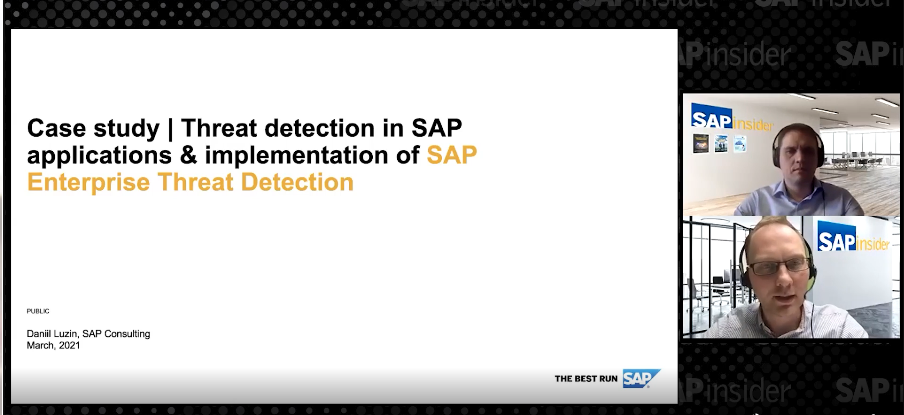Securing the Intelligent Enterprise with SAP’s Enterprise Threat Detection
Meet the Authors
Key Takeaways
⇨ The heightened global prevalence of cyber threats has amplified the urgency for organizations to move beyond the traditional preventive measures.
⇨ SAP’s Enterprise Threat Detection is a comprehensive offering that enables organizations to proactively identify, analyze, and respond to cyber threats in real-time within their SAP applications and systems.
⇨ The application operates at the application level, analyzing log data to identify potential attacks on SAP systems.
The heightened global prevalence of cyber threats has amplified the urgency for organizations to move beyond the traditional preventive measures. Organizations now need to adopt more stringent protocols for real-time monitoring, threat detection, and swift response in order to effectively protect their businesses.
SAP’s Enterprise Threat Detection is a comprehensive offering that enables organizations to proactively identify, analyze, and respond to cyber threats in real-time within their SAP applications and systems. An innovative cloud-based solution designed specifically for detecting, analyzing, and mitigating cyber threats in real-time within SAP applications, the solution is delivered as a fully managed service by SAP on the SAP Business Technology Platform and is a Security Incident and Event Management (SIEM) application. It offers cutting-edge software with round-the-clock managed security services provided by SAP experts. The solution and service work together to help companies proactively identify and respond to cyber-attacks by constantly gathering, correlating, and analyzing unusual and suspicious events across the entire SAP system landscape, preventing potential damage before it becomes critical.
Running on the SAP Cloud Platform using SAP HANA Cloud service, SAP Enterprise Threat Detection, cloud edition is a multi-tenant Cloud application that can collect logs from various SAP systems, including SAP ABAP systems, SAP HANA systems, and SAP Java systems. It is designed to detect, analyze, and neutralize cyberattacks in real-time, proactively preventing significant damage.
The application operates at the application level, analyzing log data to identify potential attacks on SAP systems. It can detect threats, whether they originate from internal or external sources, and immediately issue real-time alerts. SAP monitoring agents utilize the application to identify and analyze security incidents, and customers are informed about these incidents and their resolution through a predefined Standard Operating Procedure (SOP).
SAP Enterprise Threat Detection helps organizations with:
Proactive threat detection: Advanced analytics and real-time monitoring are utilized by SAP Enterprise Threat Detection to proactively detect potential cyber threats in SAP applications and systems. This empowers organizations to swiftly take action to prevent or mitigate potential damages.
Comprehensive log analysis: SAP Enterprise Threat Detection processes extensive log data from diverse sources within the SAP landscape, correlating information to offer a comprehensive overview of landscape activities. This empowers organizations to identify and promptly address any suspicious or anomalous activities that may signify a potential security breach.
Forensic threat detection: SAP Enterprise Threat Detection performs forensic threat detection to uncover previously undiscovered attack variants. This enables organizations to identify sophisticated and advanced threats that may evade detection by traditional security measures.
Customizable integration: Organizations can customize the integration of third-party systems and infrastructure components within SAP Enterprise Threat Detection, enabling them to tailor security monitoring and threat detection to their unique requirements and environment.
Secure log transmission: SAP Enterprise Threat Detection employs a proprietary kernel API for secure transmission of logs directly to the solution, adding an extra layer of protection against unauthorized tampering and ensuring the integrity of the security data.









